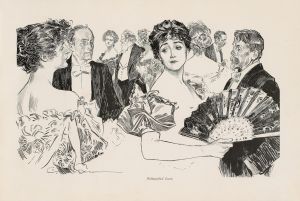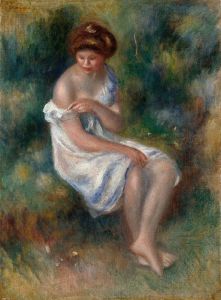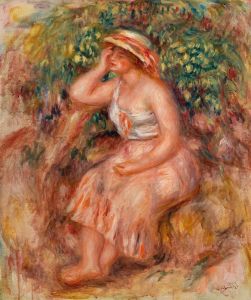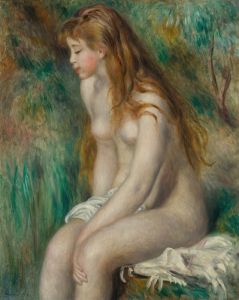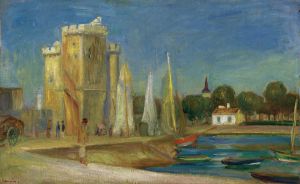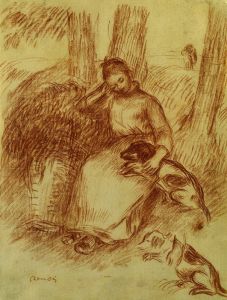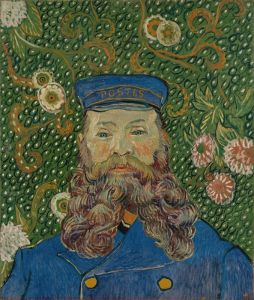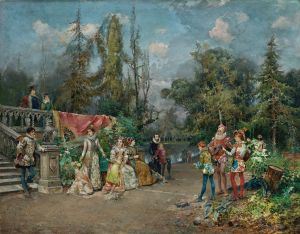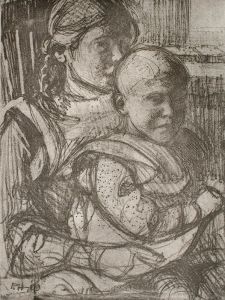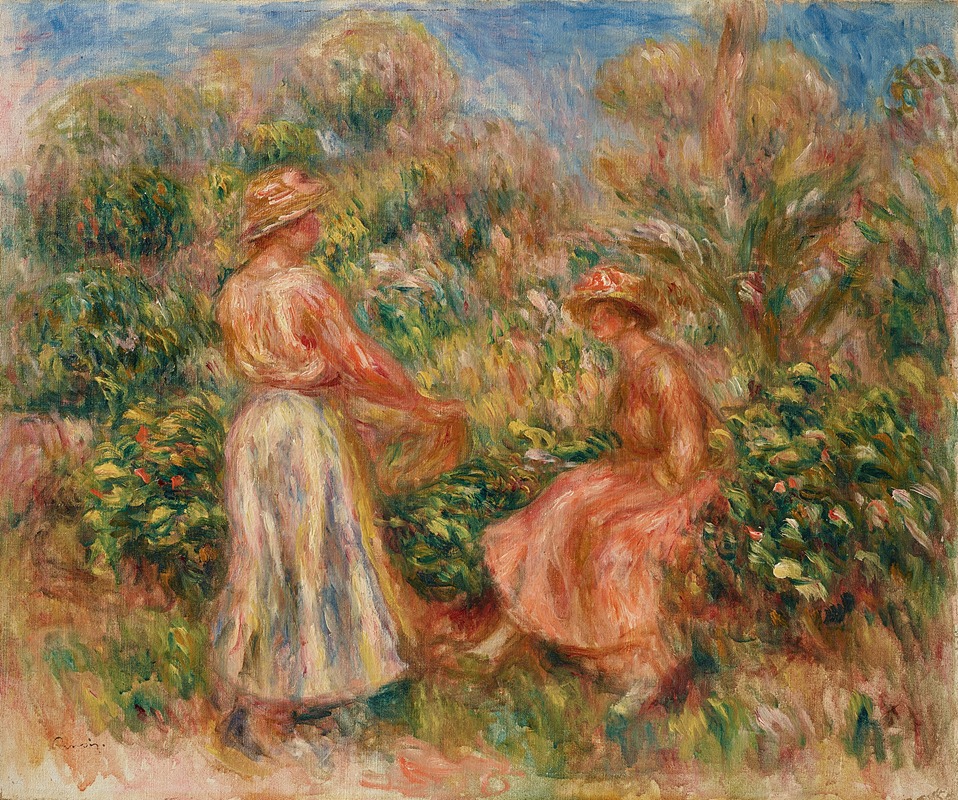
Deux femmes dans le jardin de Cagnes
A hand-painted replica of Pierre-Auguste Renoir’s masterpiece Deux femmes dans le jardin de Cagnes, meticulously crafted by professional artists to capture the true essence of the original. Each piece is created with museum-quality canvas and rare mineral pigments, carefully painted by experienced artists with delicate brushstrokes and rich, layered colors to perfectly recreate the texture of the original artwork. Unlike machine-printed reproductions, this hand-painted version brings the painting to life, infused with the artist’s emotions and skill in every stroke. Whether for personal collection or home decoration, it instantly elevates the artistic atmosphere of any space.
Pierre-Auguste Renoir, a leading figure in the Impressionist movement, painted "Deux femmes dans le jardin de Cagnes" during a period when he was exploring new artistic directions. This painting, whose title translates to "Two Women in the Garden at Cagnes," reflects Renoir's continued fascination with the interplay of light and color, as well as his interest in capturing the leisurely moments of everyday life.
Renoir moved to the village of Cagnes-sur-Mer in the south of France in the early 20th century. The region's vibrant light and lush landscapes provided him with fresh inspiration, and he produced numerous works there. "Deux femmes dans le jardin de Cagnes" is one such work, showcasing his mature style, which had evolved from his earlier Impressionist techniques to a more refined and classical approach.
The painting depicts two women in a garden, a common theme in Renoir's work, as he often portrayed women in natural settings. The garden is likely part of the estate Renoir purchased in Cagnes, known as Les Collettes, which became his home and studio. The lush greenery and the dappled sunlight filtering through the trees create a serene and intimate atmosphere, characteristic of Renoir's later works.
Renoir's technique in this painting demonstrates his mastery of color and form. He uses a rich palette to capture the vibrancy of the garden, with soft, blended brushstrokes that convey the gentle movement of light and shadow. The figures of the women are rendered with a delicate touch, emphasizing their grace and the relaxed nature of their surroundings. This approach reflects Renoir's shift towards a more classical style, influenced by his admiration for the works of the Old Masters, particularly the sensuality and warmth found in the paintings of artists like Peter Paul Rubens.
The composition of "Deux femmes dans le jardin de Cagnes" is carefully balanced, with the figures positioned in a way that draws the viewer's eye through the scene. Renoir's focus on the beauty of the natural world and the human form is evident, as he captures a moment of quiet contemplation and harmony. This painting, like many of Renoir's works from this period, embodies a sense of timelessness and tranquility, inviting viewers to pause and appreciate the simple pleasures of life.
Renoir's time in Cagnes was marked by both personal and professional challenges. Despite suffering from rheumatoid arthritis, which severely limited his mobility, he continued to paint with the help of assistants who would position his canvases and brushes. His determination to create art in the face of adversity is a testament to his passion and dedication to his craft.
"Deux femmes dans le jardin de Cagnes" is a reflection of Renoir's enduring love for the beauty of the natural world and his ability to capture it with warmth and sensitivity. The painting remains a celebrated example of his later work, illustrating his evolution as an artist and his continued influence on the world of art.





